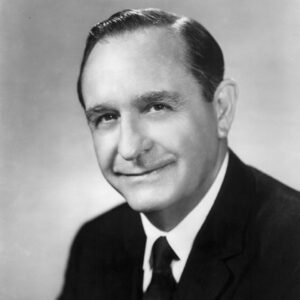calsfoundation@cals.org
Arkansas Blood Labeling Bill
aka: HB 385
On April 2, 1959, Governor Orval E. Faubus signed HB 385 (Blood Labeling Bill) into law, requiring blood banks to label the donor’s race. The bill was introduced by N. B. Murphy of Ashley County, who later called for the repeal of the bill in 1969. Faubus claimed the law would ease the minds of the “great majority” who feared transmission of sickle-cell anemia through blood transfusions. Despite thorough medical research stating that sickle-cell anemia cannot be spread through blood transfusions and knowing “it is hereditary, and can be transmitted from one person to another only by intermarriage which results in the birth of children,” Faubus and the “great majority” believed there was “always room for error” and that the white citizens of Arkansas needed protection from that possibility.
The bill had a long historical precedent in white fears of the intermingling of blood. In 1911, Arkansas formally enacted the “one-drop rule,” which codified previous understandings of race, aiming to preserve the “purity” of the white race, and answered the complex question of who would be considered “Black” or “white.” Segregationists equated the Brown v. Board of Education decision of 1954 with the sexual access of white women by Black men. A fear of miscegenation was regularly employed to stoke racial tensions in Arkansas and beyond.
In 1954, Faubus secured his seat as governor by running on a platform of racial moderation, but in order to ensure his reelection he decided to ride the segregationist firestorm that eventually led to the desegregation crisis at Little Rock Central High School in 1957. He also believed that he needed to cultivate a larger and “more respectable” constituency (i.e., more supportive of civil rights) both in the state and nation if he wanted to govern effectively. In the debates over the Blood Labeling Bill, Faubus brought together both groups. He cooperated with pro-segregationist groups, such as the White Citizens’ Council, that pushed the measure while avoiding the type of overtly racist language that might alienate the more respectable element and paying respect to science and medicine. This strategy allowed him to satisfy both the hardcore segregationists who never completely trusted him and the business community he would move closer to as he continued to serve as governor.
The Blood Labeling Bill’s repeal was signed by Governor Winthrop Rockefeller in 1969 on the basis that the bill “unduly hamper[ed] the collection of adequate supplies of blood for transfusions; that there is no scientific basis for so qualifying bloods.” Despite its repeal, the Blood Labeling Bill offers a model for understanding how Faubus navigated complicated racial issues at the tail end of the Central High Crisis. The Blood Labeling Bill was a way for Faubus to communicate to the white majority that their fears of miscegenation were not going unheard. By signing the Blood Labeling Bill, Faubus expressed his dedication to the white majority of his voters by using state legislation to protect the “mixing” of blood. While Faubus could no longer prevent Little Rock (Pulaski County) schools from integrating, he exercised his powers by signing the bill, which implied he was doing what he could within his realm to prevent African Americans’ blood from “infiltrating” white bodies.
For additional information:
“Author of Law on Labeling Blood Seeks Repeal.” Arkansas Gazette, January 15, 1969, p. 4A.
“Blood Labeling Bill Signed.” Arkansas Gazette, January 29, 1959, p. 4A.
“Governor Signs Blood Labeling, Road Bond Bills.” Arkansas Gazette, April 3, 1959, pp. 1, 2.
Jacoway, Elizabeth. Turn Away Thy Son: Little Rock, the Crisis That Shocked the Nation. New York: Free Press, 2007.
Riva, Sarah. “Acting Up and Courting Controversy: The Arkansas General Assembly Legislative Sessions of 1957, 1958, and 1959.” MA thesis, University of Arkansas at Little Rock, 2013.
Dellynn Prince-Travis
University of Arkansas, Fayetteville
 Health and Medicine
Health and Medicine Law
Law World War II through the Faubus Era, 1941 through 1967
World War II through the Faubus Era, 1941 through 1967 Orval Faubus
Orval Faubus 




Comments
No comments on this entry yet.